Interesting skyscape
Here’s a photo of a skyscape somewhere in South Carolina. Just what is it and where is it? Send your guess to editor@charlestoncurrents.com with “Mystery Photo” in the subject line. Please make sure to include your name and contact information.
Last issue’s mystery
 Several readers correctly identified the ship in the March 26 as the newly-christened USS Ralph Johnson, named for a local Marine hero who died in Vietnam. But the question wasn’t to name the ship, but to identify who named the ship.
Several readers correctly identified the ship in the March 26 as the newly-christened USS Ralph Johnson, named for a local Marine hero who died in Vietnam. But the question wasn’t to name the ship, but to identify who named the ship.
That honor goes to the U.S. secretary of the Navy. Ray Mabus, who held the office in the Obama administration, named the ship for Johnson. He told us that he was honored to do so.
Hats off to several readers who correctly identified Mabus as the ship-namer: Chris Brooks of Mount Pleasant; Bruce Hawker of Sydney, Australia (who wins the award for the successful guesser who lives the most miles from Charleston); reliable George Graf of Palmyra, Va.; and Rick Saunders of Charleston.
Graf sent along this additional information: “On 15 February 2012, Secretary of the Navy Ray Mabus announced the ship’s named to be Ralph Johnson. Mabus named three destroyers after Navy and Marine Corps heroes whose actions occurred during different conflicts which spanned several decades, but were united in their uncommon valor.
“I researched that ship names are recommended to the Secretary of the Navy, who then choses the name. … Friends and family remember Johnson as a religious young man who knew at an early age he wanted to become a Marine. Johnson enlisted in March 1967 and was sent to fight in Vietnam in early 1968. While on his last patrol, a friend remembers Johnson finding enemy mines near where American helicopters were set to land. Early on March 5 when his team came under attack and a grenade landed in the hole where Johnson and two other Marines were positioned, Johnson is said to have jumped on the explosive, shielding his colleagues from the blast. Johnson is buried at Beaufort National Cemetery.”
Send us a mystery: If you have a photo that you believe will stump readers, send it along (but make sure to tell us what it is because it may stump us too!) Send it along to editor@charlestoncurrents.com.
IN THIS ISSUEMYSTERY PHOTO: Interesting skyscape
FOCUS: “On the Table” events to offer new way to provide community input
COMMENTARY, Brack: How the divisive issue of climate change can be a unifier
IN THE SPOTLIGHT: Charleston International Airport
PALMETTO POEM: Taking up Space
GOOD NEWS: Baker Hospital site to become sports complex
FEEDBACK: Reader worried by the slug who has us fooled
S.C. ENCYCLOPEDIA: Baseball in South Carolina
CALENDAR, April 2+: From Cajun Fest to barks, books and beer
FOCUSFOCUS: “On the Table” events to offer new way for community input
By Andy Brack, editor and publisher | Your voice matters.
That’s the simple message of an effort coming soon by the new Library Foundation of the Lowcountry to bring people together for a meal so they can talk about what’s important. It’s a practical way to elevate civic conversations, build new relationships and inspire collaborative action across the region.
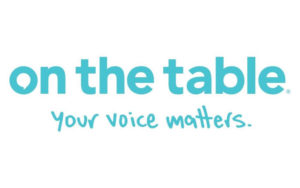 It’s called “On the Table Lowcountry.” It is modeled after a successful similar event in Chicago that has brought together tens of thousands of people on a single day to focus on community needs.
It’s called “On the Table Lowcountry.” It is modeled after a successful similar event in Chicago that has brought together tens of thousands of people on a single day to focus on community needs.
“This grassroots effort brings people together in dinner-table-sized gatherings to discuss what is good, what needs changing and what they as individuals can do to improve lives in the Tri-county, area,” said Janet Segal, chair of the foundation and former chair of the Charleston County Public Library Board of Trustees.
“The discussions are open-ended and not constrained by specific questions or topics,” she emphasized. “Those around the table discuss what is important to them and how to create a stronger community.”
According to the event’s website, “This act of people coming together to discuss the issues that matter most to them has never been more important. Progress will only result when we collaborate to make contributions that add up to a greater solution. On the Table will connect individuals and communities of diverse perspectives and backgrounds to do just that.
Organizers are expecting to involve 100 hosts and up to 1,000 people from Berkeley, Charleston and Dorchester counties on May 1 as a pilot project for the event. But that’s only a learning prelude before the full day of On The Table discussions scheduled for September 27. They hope as many as 10,000 people will participate in talks over meals whenever and wherever hosts decide to have them – in homes, at local restaurants, during a brown bag lunch in parks, in libraries or in places of worship.
What’s really cool about the foundation’s project is how it will collect and share data on the hundreds of community discussions. Data gathered is expected to be used to help shape funding priorities of the foundation and, perhaps more importantly, provide information to various groups around the area that may influence regional policy and planning.
The community discussions during the pilot phase of the project on May 1 will help organizers learn how to make the project become better and work out the kinks. When the official On the Table day officially launches, “all of the discussions will occur on a single day (Thursday, September 27) and the results will be captured on social media by the participants,” Segal said.
Participants also will receive a follow-up survey, which will be crunched into a formal printed report by the Library Foundation of the Lowcountry to be made available to nonprofits, governments and other groups at no charge.
“The model of hundreds of small-scale listening sessions has been tested in more than a dozen cities in the U.S. since first started in Chicago in 2014,” Segal added.
MORE INFORMATION
- WHO can host: Anyone – individuals, groups or organizations.
- WHERE to host: Anywhere from a backyard or coffeehouse to your office or dining room table.
- WHAT TOPICS should be discussed: What you and your group thinks is important to you and your community.
- THEN WHAT: First, take the survey that you’ll get by email. Then when all of the data is collected, you can use any ideas from the hundreds of community discussions to make a difference.
- LEARN MORE: lowcountryonthetable.org.
- Have a comment? Send to: editor@charlestoncurrents.com
BRACK: How the divisive issue of climate change can be a unifier
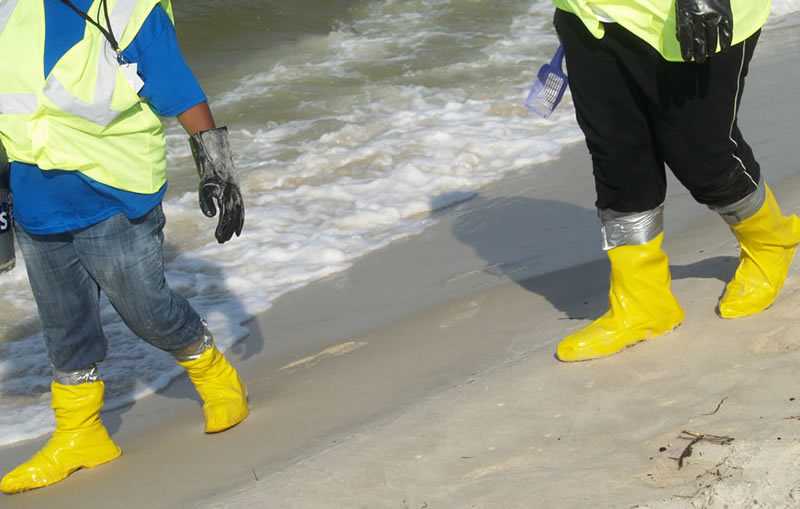
Contractors patrolled Gulf beaches for pollution after the Deepwater Horizon spill in 2010. Photo by Andy Brack.
By Andy Brack, editor and publisher | South Carolinians can learn something from an Alabama Christian leader who is trying to unite people through what may seem an unlikely issue – the environment.
Dr. Randy Brinson, a Montgomery gastroenterologist who is president of the Christian Coalition of Alabama, is on a mission. He wants to make climate change become a nonpartisan issue that brings people together for solutions, not allow it to continue to be a political ping pong ball manipulated by cynics for their own purposes.
“It is not a partisan issue until people make it a partisan issue,” he said this week. “It can’t be controlled by political donations or politicians alone. It has to involve all of us working together to reduce or mitigate factors that we can control.”
Next weekend on the Alabama coast, Brinson is hosting the first Embrace and Restore Conference. It will be a day-long discussion to help evangelical leaders better understand the reality of changes to climate brought on by man’s interactions with the environment. Among those scheduled to speak are Alabama’s commissioner of agriculture and former U.S. Rep. Bob Inglis, a South Carolina Republican who heads the Energy and Enterprise Initiative to promote free enterprise action on climate change.
 “We are hosting the conference to highlight what aspects of climate change that we can be impactful and proactive in addressing as the body of Christ,” Brinson said. “We also are addressing the Deepwater Horizon disaster and how to keep that from occurring again along with hurricane mitigation and homeowners’ insurance concerns.”
“We are hosting the conference to highlight what aspects of climate change that we can be impactful and proactive in addressing as the body of Christ,” Brinson said. “We also are addressing the Deepwater Horizon disaster and how to keep that from occurring again along with hurricane mitigation and homeowners’ insurance concerns.”
In April 2010, oil spewed for weeks from the Deepwater Horizon well in the Gulf of Mexico and polluted the coast from Texas to Florida. Eight years later, memories of the kerosene scent around Mobile Bay remain as fresh as this spring’s budding flowers.
“The issue of climate change has been so politicized by the political left and right,” Brinson observed. “The uniting theme for evangelical Christians is the impact climate is having on those areas that are being served by missionaries, particularly in sub-Sahara Africa. There is no denying the impact of climate change on the continent causing disease and water shortage and death. We cannot help this region recover without addressing climate change.”
In other words, Brinson sees the connection – a nexus missed by many who ignore or don’t believe in climate change – of man’s impact on the environment in destitute places where American missionaries help. For them to be able to do their work, he says, they need to reduce man’s impacts on climate.
This approach is not unfamiliar territory for Brinson, who gained acclaim in the 2004 election for registering more than 78,000 evangelicals through Redeem the Vote, an evangelical education initiative similar to Rock the Vote for youths.
Listen to how Brinson described man’s interaction with the environment in a 2006 interview:
“We are entrusted to protect it. This in no way implies that we worship the Earth and see it as some kind of pagan deity, as some conservatives would attempt to stereotype those interested in the environment. It is truly our sacred duty to protect the Earth as we utilize the resources that God has provided to us.
“These ideas are not mutually exclusive. Most sportsmen today are professing Christians, yet they support initiatives that protect our natural forests, lakes, streams and waterways so that future generations can enjoy them. We must mitigate the man-made emissions that threaten our environment. Just as we are commanded to treat our bodies as the temple of the Holy Spirit, we must care for the environment and the world around us.”
Brinson’s strategy is different from how many environmentalists use logic and science to push leaders for climate change solutions. But what’s notable is how he offers a way to get to the same place for pragmatic solutions through the parallel path of using Biblical teachings of leaving the earth a better place by reducing environmental impacts and global warming.
This is an important lesson. It uses what many see as a divisive issue in a unifying manner. It’s also something the conservation community in South Carolina should embrace – to join with people who may not approach issues like they do but who want to get to a common goal.
- Learn more about the conference here: https://www.embraceandrestore.org/
- Have a comment? Send to: editor@charlestoncurrents.com
SPOTLIGHT: Charleston International Airport
 Today we shine our underwriter spotlight on Charleston International Airport, which provides a first impression of the Charleston metropolitan area to over 4 million passengers a year who visit for business and leisure activities. One of three public airports operated by the Charleston County Aviation Authority, Charleston International Airport is committed to providing an unparalleled passenger experience while continuing efforts to support economic development for the Lowcountry and State of South Carolina.
Today we shine our underwriter spotlight on Charleston International Airport, which provides a first impression of the Charleston metropolitan area to over 4 million passengers a year who visit for business and leisure activities. One of three public airports operated by the Charleston County Aviation Authority, Charleston International Airport is committed to providing an unparalleled passenger experience while continuing efforts to support economic development for the Lowcountry and State of South Carolina.
Eight airlines currently serve Charleston International Airport, which have jobs that create more than $200 million in income for workers in the region. Visiting passengers also spend about $450 million a year directly in area businesses, which sustains an estimated 6,000 jobs locally. The total economic impact of the Charleston International Airport is over $1 billion dollars to the Lowcountry and State of South Carolina.
- More: iflychs.com.
POEM, Mixon: Taking up Space
By Loren Mixon, special to Charleston Currents
Good for:
Wandering minds, i.e. I dreamt myself walking down the street to the thrift store, losing my life in old broaches and lessons in a woman’s fading memory before I found my body sitting in a pew—running from a catholic childhood.
Where to Start:
Find a galaxy on the back of your hand, start small.
Find your earthbound stars and black holes—tell them your story in an alien language and discover the people sympathetic to communion.
For more Resources:
Surrender to space and find magic in the unknown.
Dig your toes into sand and put your mind on the moon, the waves will keep you dreaming.
Shower in meteors and wash dust in your hair—make it weathered, wrap your head in the stuff of beginning.
Let the rain remind you aren’t in control
Loren Mixon is a poet, educator, and advocate based in Summerville, S.C. She has been published in Yemassee Online and The Good JuJu Review. Her first chapbook is Taking Up Space: A Poet’s Guide.
GOOD NEWSGOOD NEWS: Baker Hospital site to become sports complex
Staff reports | A new sports facility, athletic campus and public amenities center is headed for the former the former Baker Hospital site just south of Cosgrove Avenue after the Charleston County Park and Recreation Commission (CCPRC) voted to enter into an agreement to lease the site to United States Performance Center.
“This partnership will offer the community a sports and recreational complex at the former Baker Hospital site,” CCPRC Executive Director David Bennett said in a press release. “While the public will enjoy free access to passive recreational amenities at the site, no public funds will be needed to develop, operate or maintain the facility.
Per the proposed agreement, the master plan of the site must meet the approval of the commission and provide public access. The tenant’s master plan will include multi-purpose fields for both public and rental use, walking trails and viewing locations of the Ashley River. The site, which will cater to a variety of athletes and be open and available to the general public, is expected to ultimately generate tourism revenue in the area.
While the master plan has not yet been completed, planned features at the site include:
- Multi-purpose trails
- Fitness trails
- Green space
- Picnic tables and benches
- Athletic fields
- Outdoor and indoor volleyball courts
- Outdoor/indoor track
- Indoor facility to accommodate tournaments for local sports clubs, recreation departments, schools, and colleges for sports like volleyball, basketball, gymnastics, cheerleading, and karate
Locally known as the Baker Hospital, the site is located just south of Cosgrove Avenue, and west of I-26 on the Ashley River – a unique location in the center of the peninsula. A public workshop for gathering public input on CCPRC’s plan for the site was conducted in June 2015, and surveys were sent out and posted on CCPRC’s website, with more than 500 people responding. Walking trails, marsh access and river-viewing points were high priority amenities from the surveys and have been planned for incorporation into the master plan.
“CCPRC could not afford to develop the property in this way, and rather than leave the property undeveloped for years to come, we believe this partnership will address the need to have a state-of-the-art recreational facility in the Lowcountry.”
The Baker site was donated to CCPRC in 2015 through funding support from Charleston residents Michael and Jenny Messner of The Speedwell Foundation, and their business partner Paul Shiverick and his wife Betsy. Tax funds were not used in attaining the site.
In other Good News:
![]() New fire chief. Daniel Curia, fire chief in Durham, N.C., is set to become Charleston’s new chief on July 30, Mayor John Tecklenburg announced with city council last week. “Dan Curia’s lifelong commitment to excellence and public service will make him an ideal leader of that elite force, now and in the years ahead,” the mayor said. More information on Curia, who has 28 years of experience as a firefighter, can be found here.
New fire chief. Daniel Curia, fire chief in Durham, N.C., is set to become Charleston’s new chief on July 30, Mayor John Tecklenburg announced with city council last week. “Dan Curia’s lifelong commitment to excellence and public service will make him an ideal leader of that elite force, now and in the years ahead,” the mayor said. More information on Curia, who has 28 years of experience as a firefighter, can be found here.
Big dance. Hats off to the College of Charleston’s Charleston Miracle, formerly known as Dance Marathon, for efforts to raise more than $115,000 for MUSC’s Shawn Jenkins Children’s Hospital at the inaugural CougarThon. Almost 500 students participated in the March 10 event that lasted 13 hours.
Waterfront Park to be renamed. The city of Charleston will rededicate Waterfront Park April 28 to honor former Mayor Joseph P. Riley Jr. “Waterfront Park is where we find the fullest realization of Mayor Riley’s vision, the truest expression of the ideas and ideals that guided him through forty years of public service,” current mayor John Tecklenburg said in a statement. The ceremony for Joe Riley Waterfront Park will take place on the park’s Vendue Plaza and will include a special performance by the Charleston Symphony Orchestra.
Volvo grant. Volvo Car USA Operations Grants program has awarded a $20,000 grant to Trident Technical College Foundation to support the Charleston Regional Youth Apprenticeship program, according to a press statement.
- Have a comment? Send to: editor@charlestoncurrents.com
FEEDBACK: Reader worried by the slug who has us fooled
I am not worried about my phone. I am terrified that Trump is our president.
I am even more terrified that if he stood for re-election today, he would win. He is a slug, but seems to have the country fooled.
— Joseph S. Mendelsohn, Charleston, S.C.
- Send us your thoughts. We love hearing from readers. Comments are limited to 250 words or less. Please include your name and contact information. Send your letters to: editor@charlestoncurrents.com| Our feedback policy.
HISTORY: Baseball in South Carolina
S.C. Encyclopedia | Union troops introduced baseball to South Carolina during the late stages of the Civil War. The game soon blossomed into a major social and athletic event in many rural and urban communities during Reconstruction. Both Columbia and Charleston formed local teams that played against the northern occupation forces. By the time Wade Hampton III became governor in 1877, the game was firmly established. In a game played the following year in Charleston between the “Carolinas” and the “Palmettoes,” attendance was so large that fans disrupted play by crowding onto the field. Spectators’ interest also included wagers on their favorite side. By 1886 professionalism had come to South Carolina’s game. Charleston’s Southern Association team reportedly paid its players as much as $2,000. Its biggest rivals in these early years were Georgia teams. Some Charleston fans even paid 15¢ to follow away games telegraphed, play-by-play, into Hibernian Hall. Amateur and semi-professional baseball had equally large followings. By 1889 Camden was the site of a “flourishing Base Ball Association owning a park where the best amateur games of the State are played.” Two years earlier, a lively game in Greenwood between the “Columbias” and the “Greenvilles” was so competitive that a riot nearly ensued after the Greenville team won, 7 to 6. By the end of the nineteenth century, some of the state’s most loyal baseball fans were found in South Carolina’s mill villages. In the 1870s and 1880s, when the textile industry began taking root in the upstate, mill-sponsored baseball clubs emerged, and they were thriving by the start of the twentieth century. Initially, mill teams consisted of the best players in each local workforce. But as the rivalries between mill towns grew, owners sought better talent and recruited talented players from outside the community, sometimes snatching the best players from rival mills. Mill baseball provided textile communities with both entertainment and a source of pride. One of the earliest mill champions was the Piedmont team led by Champ Osteen. In 1899, after beating most of the local opposition, the Piedmont squad received a challenge from a team from Augusta, Georgia, which they also defeated. Until the twentieth century, mill leagues were informal and focused on local tournaments and other games throughout the summer months. Some of the first organized mill leagues appeared in 1908 with the formation of the South Carolina Mill League and the Greenville Mill League. During the next half-century, regional mill leagues developed throughout the upstate and the Midlands, including teams from Anderson to Gaffney and Graniteville to Winnsboro. Hundreds and sometimes thousands of fans attended local games. Hotly contested matches sometimes led to fights both on and off the field. Perhaps the greatest triumph for any mill town came in 1936, when the Spartanburg American Legion team won the state’s first national championship in any sport by defeating a Los Angeles team in a five-game series (some twenty thousand fans attended the fifth and deciding game). Mill leagues continued to thrive into the post–World War II era. But by the early 1950s, automobiles and televisions undermined mill league baseball’s following. Attendance dwindled, and by the early 1960s the textile leagues had virtually ceased to exist.
Baseball continued to thrive in other leagues. In August 1875 one of the first recorded intercollegiate games in the state saw an all-black team from the University of South Carolina defeat an all-black team from an Orangeburg college by a score of 41 to 10. By the late nineteenth century the University of South Carolina and Clemson began their long baseball rivalry. Other schools also organized varsity squads around the same time, including Benedict, South Carolina State College, the Citadel, Furman, and Wofford. Competition centered on in-state schools and neighboring ones in North Carolina and Georgia. In 1958 Clemson became the first South Carolina school to reach the College World Series. Since then, competition for honors and star players accelerated at all levels of college baseball as each of the state’s schools competed to reach the College World Series. Several college stars have advanced to play professionally.
The minor league system that fed players into the major leagues has given excitement and pleasure to South Carolina fans since the 1900s. One of the most endearing of these has been the South Atlantic League, which began play in 1904. Initially consisting of teams from South Carolina, Georgia, and Florida, franchises have come and gone from Columbia, Charleston, and Greenville during a century of play. Other minor leagues that flourished at one time or another in the state include the Carolina League (Greenville, Spartanburg, and Greenwood) and the Palmetto League, ca. 1934–1951 (Orangeburg, Hartsville, Lake City, Kingstree, Georgetown, Camden, and Sumter).
Until the 1950s these minor and amateur leagues were segregated, allowing only white ball players. Black amateur leagues flourished in many areas of the state, but little documentation of their history remains. The earliest documented black textile league game occurred on September 4, 1895, in Newberry County between Newberry Mills and their counterparts from Anderson. Black textile teams disappeared for the same reasons that their white counterparts did during the 1950s. While Jackie Robinson integrated the major leagues in 1947 and South Carolina native Larry Doby followed three months later as the first African American in the American League, the desegregation of baseball in South Carolina took longer. In 1955 one of the first African Americans to play professionally in the state was Frank Robinson, who starred with the Columbia Reds and later had a Hall of Fame career in the major leagues with the Cincinnati Reds and the Baltimore Orioles.
Youth baseball took the longest to integrate. When the black Cannon Street YMCA team from Charleston fielded an all-star team to compete in the 1955 Little League, white teams in the state refused to play against them. Other teams from the Southeast followed South Carolina’s lead, ignoring instructions from Little League headquarters in Williamsport, Pennsylvania, directing that they play. Although the Cannon Street team was declared the winner by default, they could only watch the Little League World Series after being declared ineligible because they had not earned the right on the playing field. Having refused to accept Little League directives to allow black teams, white officials from South Carolina and other southern states formed an independent organization called Little Boys Baseball, Inc. In 1956 a Greenville entry won the league’s first World Series. The fledgling league changed its name to Dixie Youth Baseball in 1962 after Little League officials protested that Little Boys Baseball infringed on their trademark. By the middle of the decade Dixie Youth Baseball finally desegregated.
— Excerpted from an entry by Fritz Hamer. To read more about this or 2,000 other entries about South Carolina, check out The South Carolina Encyclopedia, published in 2006 by USC Press. (Information used by permission.)
ON THE CALENDARCALENDAR, April 2+: From Cajun Fest to barks, books and beer
![]() Wine Down Wednesdays: 5:30 p.m. to 7:30 p.m., on April 4, April 18 and May 2, Old Towne Creek County Park, West Ashley. While this new county park is not yet open daily to the public, these Wednesday opportunities offer Lowcountry residents the chance to experience the beauty of this property. Tickets needed. More: CharlestonCountyParks.com/WDW.
Wine Down Wednesdays: 5:30 p.m. to 7:30 p.m., on April 4, April 18 and May 2, Old Towne Creek County Park, West Ashley. While this new county park is not yet open daily to the public, these Wednesday opportunities offer Lowcountry residents the chance to experience the beauty of this property. Tickets needed. More: CharlestonCountyParks.com/WDW.
Lowcountry Cajun Festival: Noon to 6 p.m., April 8, James Island County Park. This festival of Cajun music and food brings Louisiana living to the Lowcountry. After getting a fill of outstanding food, festival-goers can kick off their shoes and dance to live, non-stop Zydeco and Cajun music, performed on stage throughout the day by Charleston’s Shrimp City Slim at 1 p.m., Jeffery Broussard and The Creole Cowboys at 2:30 p.m., and Nathan Williams and The Zydeco Cha Chas at 4:30 p.m. Admission to the Lowcountry Cajun Festival is $15. The event is free for ages 12 and under with a paying adult. For more information, call 843-795-4386 or visit CharlestonCountyParks.com.
(NEW) Barks and Brews: 5 p.m. to 8 p.m., April 10, Magnolia Park and Community Garden, West Ashley. The Charleston Parks Conservancy will hold an event with food trucks and beer and wine for sale. There will be a dog agility course and music. Tickets are $10 each. Purchase here.
Books for Bier: 5::30 p.m. to 8 p.m., April 10, Bay Street Biergarten, East Bay St., Charleston. The Charleston Friends of the Library will have their third annual Books for Bier event to celebrate National Library Week. As the event name implies, bring a gently used book to Bay Street Biergarten and receive one free beer! Also, any child who brings a children’s book to donate will receive a free root beer! (Limit one beverage per person). More: www.CharlestonLibraryFriends.org.
Designer showcase: Through April 15, 142 Tradd St., Charleston. The Charleston Symphony Orchestra League will present its Symphony Designer Showhouse with proceeds to benefit the league and scholarships. The showcase house, a three-story stucco home built around 1870 on one of Charleston’s classic streets, will display twelve exquisitely decorated spaces designed by locally and nationally renowned interior designers. For more on tickets and information, click here.
Charleston Outdoor Festival: 9 a.m. to 4 p.m., April 20 and 21, James Island County Park. The weekend festival includes a multitude of outdoor recreation activities like mountain biking, slack lining, archery, climbing, and disc golf, open to all ages. It also features the East Coast Canoe and Kayak Symposium, one of the country’s premier showcases of canoeing, kayaking and stand up paddleboarding. Try out equipment, compete in tournaments and other hands-on activities, and learn everything from the basics to expert skills in each sport. Park admission starts at $2 per person. To try activities, get the Try It pass for $10. Or, register for the symposium for classes, demos and much more. For a full event schedule, visit charlestoncountyparks.com or call 843-795-4386.
Antique tractor show and pull: 1 p.m., April 21, 5146 Highway 174, Adams Run. Gates will open at 9 a.m. as people flock to see more than 50 fully restored farm tractors from the 1930s, 1940s and 1950s on display along with vintage automobiles. Food vendors and games for children make the event fun for the whole family. Tractor-pulling contest begins at 1 p.m. Admission is $5 for adults; children under 12 are free. No pets; no alcohol. More information, contact, Pete Laurie, 843-822-2057.
Early morning bird walks at Caw Caw: 8:30 a.m. every Wednesday and Saturday, Caw Caw Interpretive Center, Ravenel. You can learn about habitats and birds, butterflies and other organisms in this two-hour session. Registration not required, but participants are to be 15 and up. $10 per person or free to Gold Pass holders. More: http://www.CharlestonCountyParks.com.
Farmers markets in the area
SATURDAYS: Johns Island Farmers Market operates each Saturday from 10 a.m. to 1 p.m. year-round with more than 50 local farmers and vendors, food trucks, music and more. The market is located on the campus of Charleston Collegiate School, 2024 Academy Road, Johns Island.
SATURDAYS: The Town Market on James Island are again open. Open 9 a.m. to 1 p.m. every Saturday at the James Island Youth Soccer Club, 871 Fort Johnson Road, James Island.
Coming soon:
WEDNESDAYS: West Ashley Farmers Market is open 3 p.m. to 7 p.m. every Wednesday from April 25 to Oct. 3 in Ackerman Park, 55 Sycamore Ave., West Ashley.
SATURDAYS: Charleston Farmers Market opens every 8 a.m. to 2 p.m. Saturday starting April 15 every Saturday through Nov. 24 at Marion Square. A holiday market will be open Dec. 1, 2, 8. 9, 15 and 16.
- If you have an event to list on our calendar, please send it to editor@charlestoncurrents.com for consideration. The calendar is updated weekly on Mondays.
About Charleston Currents
OUR UNDERWRITERS
Charleston Currents is an underwriter-supported weekly online journal of good news about the Charleston area and Lowcountry of South Carolina.
- Meet our underwriters
- To learn more about how your organization or business can benefit, click here to contact us. Or give us a holler on the phone at: 843.670.3996.
OUR TEAM
Charleston Currents offers insightful community comment and good news on events each week. It cuts through the information clutter to offer the best of what’s happening locally.
- Mailing address: P.O. Box. 22261 | Charleston, SC 29413
- Phone: 843.670.3996
Charleston Currents is provided to you twice a week by:
- Editor and publisher: Andy Brack, 843.670.3996
- Contributing photographer: Michael Kaynard
- Contributing editor, careers: Ben Fanning
- Contributing editor, common good, Fred Palm
- Contributing editor, money: Kyra Morris
- Contributing editor, Palmetto Poem: Marjory Wentworth
SUBSCRIBE FOR FREE
Subscriptions to Charleston Currents are free.
- Click here to subscribe.
- Unsubscribe. We don’t want to lose you as a reader of Charleston Currents, but if you must depart, please click here.
© 2008-2017, Statehouse Report, LLC. All rights reserved. Charleston Currents is published every Monday by Statehouse Report LLC, PO Box 22261, Charleston, SC 29413.


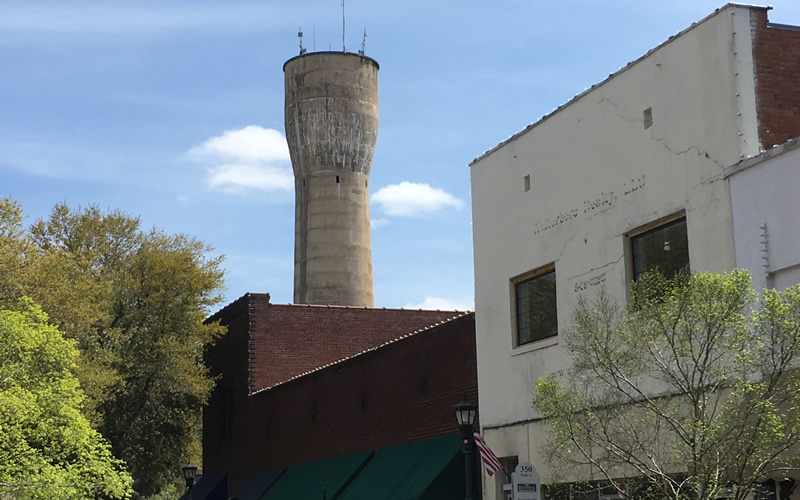
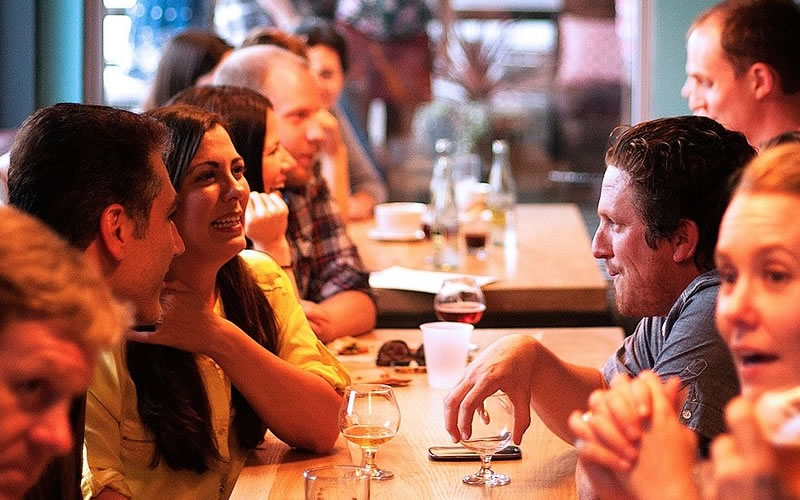


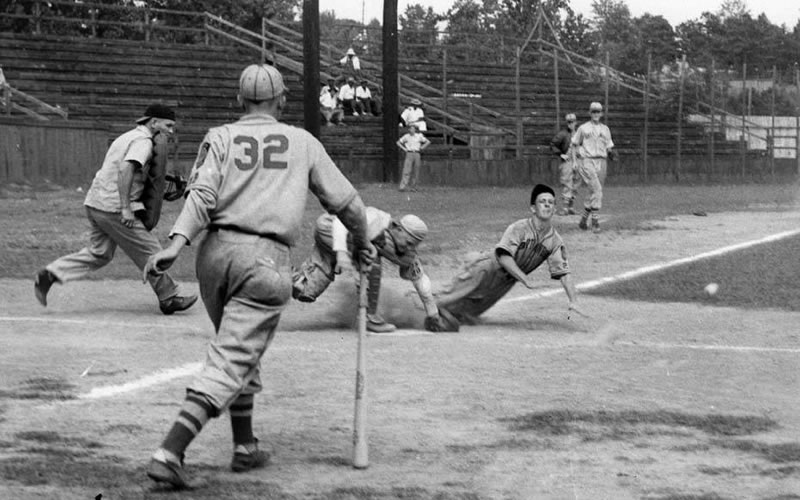

 We Can Do Better, South Carolina!
We Can Do Better, South Carolina!
























